For all of my photoshoots, I chose to represent femininity and masculinity through the different stereotypes and expectations both genders are supposed to live up too.
Photoshoot one:
Firstly, for this photoshoot I went outside as it was snowing and I thought I could use the snow as an opportunity to include some feminine elements for my photographs. I edited the first photo by decreasing the highlights and the shadows which made a significant difference. This helped to decrease the light in the image as it was quite bright, and increase the shadows. There is also a blue tint which gives the image as a whole an ‘icy’ feel which links to the subject as they are in the snow.
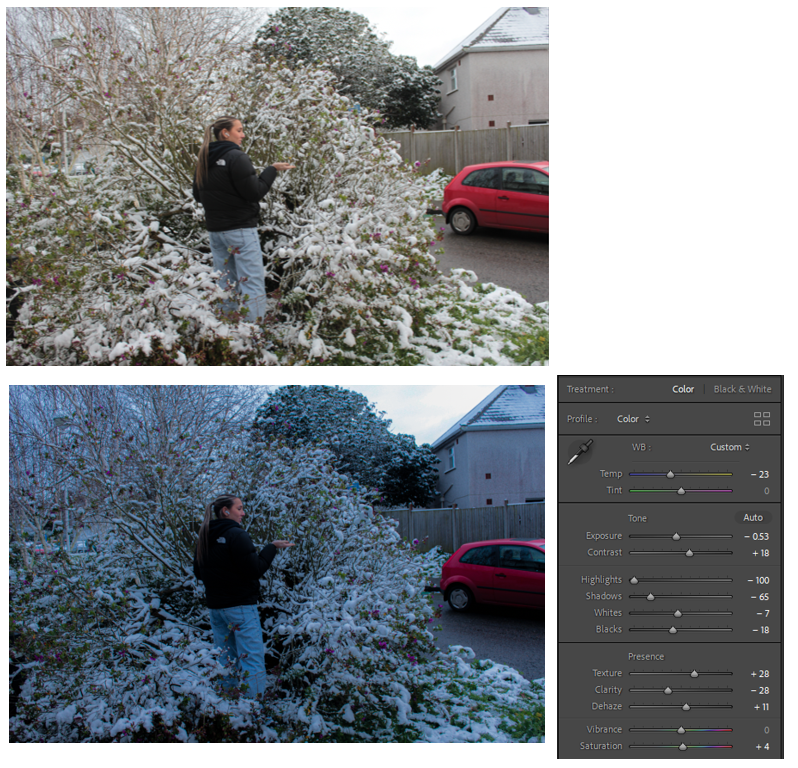
For my second image, my aim was to make the subject a bit more focused so I decreased the exposure and increased the contrast. By increasing the contrast, the face looks brighter as the shadows are increased and the face looks defined.
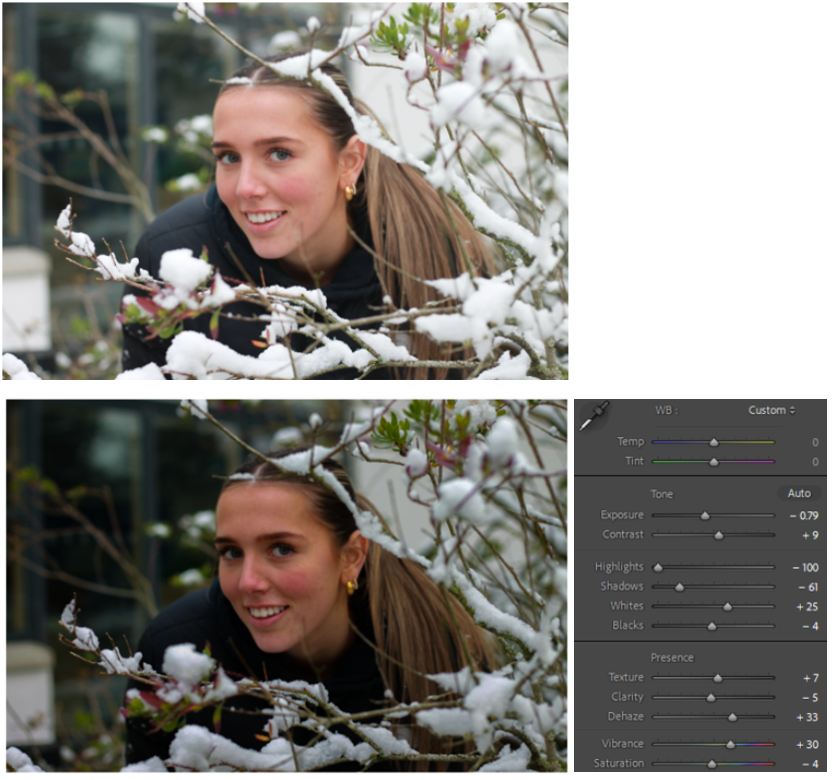
For my last image, I chose to edit this one because the subject is using a motorbike as a prop to show a more masculine aspect. I decided to decrease the vibrancy and saturation to make it black and white. This photo looks like an ‘action-shot’ and stereotypically, women riding motorbikes is not normalised.

Photoshoot two:

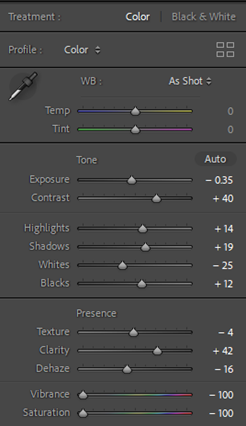
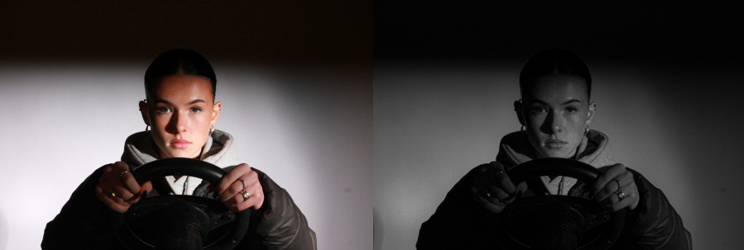
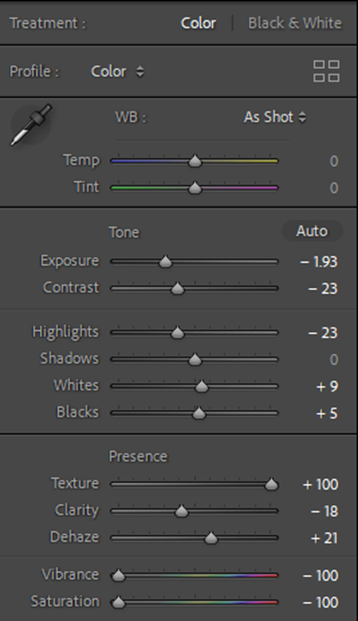
I think both of these photos perfectly represent the stereotype of men, that they are more important and powerful compared to women. I like the way the subject is staring directly into the camera which replicates the ‘male gaze’ and reinforces this idea of the stereotype.
Photoshoot three:

Lastly, I edited this photo to make it softer and give off a more ‘feminine vibe’. I like the way her skin looks very shiny, and she is lightly gazing over her shoulder towards to camera to represent innocence. I made the background darker and her skin brighter, so the viewer feels like they can only focus on the main subject.
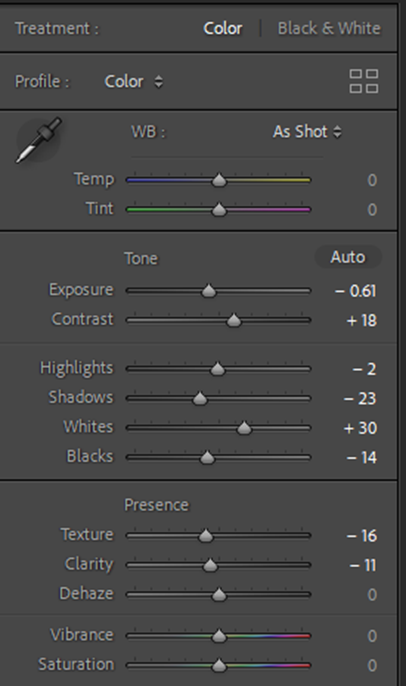
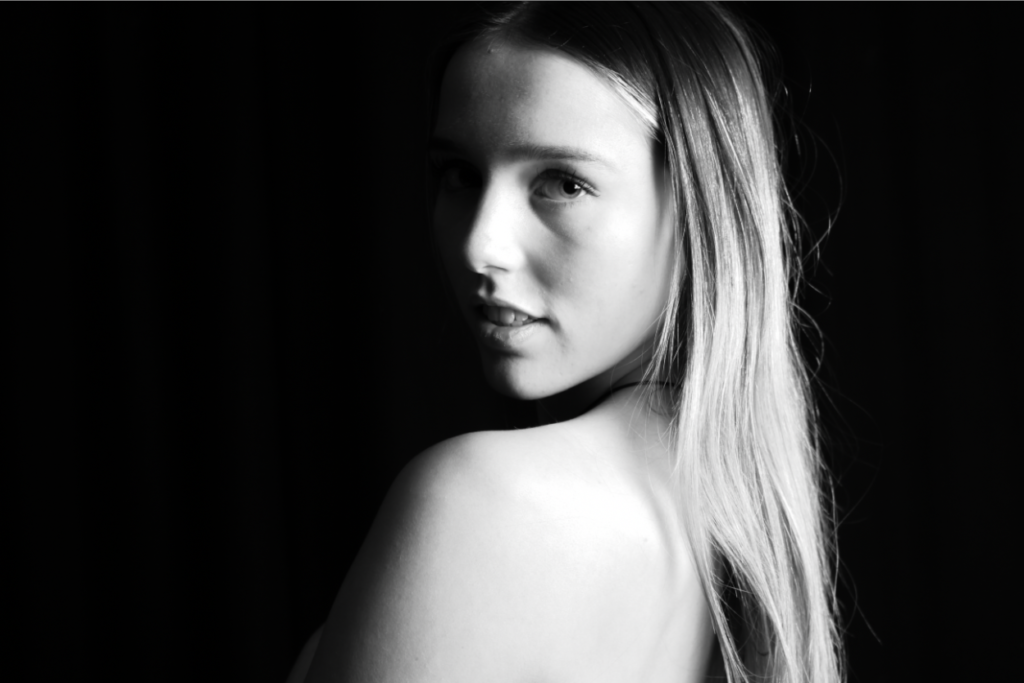

I then experimented by changing the vibrancy and saturation to make this image black and white, whilst keeping the edits of the previous image the same. This enhances the feeling of ‘innocence’ to the viewer. Femininity is represented nicely here as the subject is close up and we can see her face features very clearly. Stereotypically, women are supposed to have long hair, soft facial features and nice skin. As we can see here, this model represents all of those aspects finely.
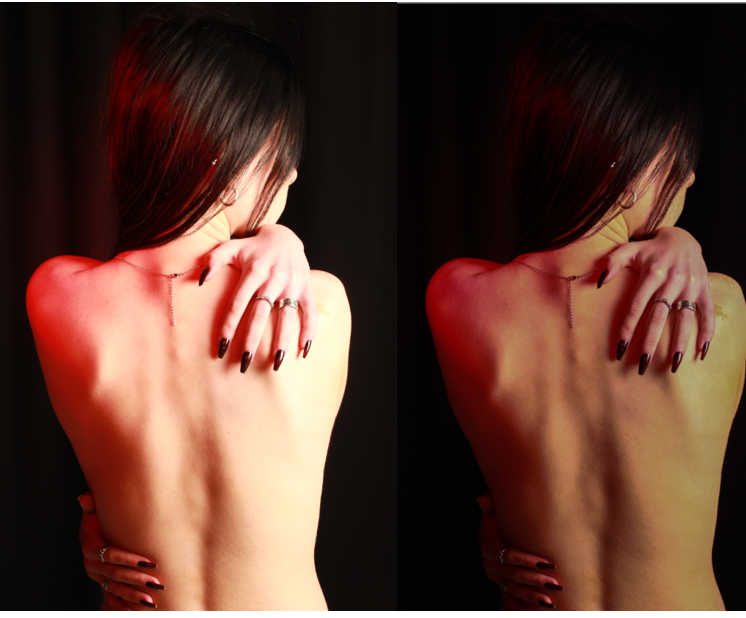
Finally, this is my favourite image I edited because femininity is represented in a different way. Rather than reflecting on the stereotypes, femininity is presented here through the large amount of skin on show, and her long red nails. Many years ago, when women were seen as less important then men, and they were only stay at home wives/mums, they were expected to keep their skin hidden by wearing long, concealing clothing and to keep their nails short and clean. If lots of skin was on show it was seen as provocative. The colour pink, ribbons and lace are also associated with typical feminism, whereas the colour blue is seen to be linked to masculinity. As we see in the image above, the model is revealing her skin to show us how much this has changed over time. The long, red nails represent a sense of power, confidence and individuality as red symbolises femininity.
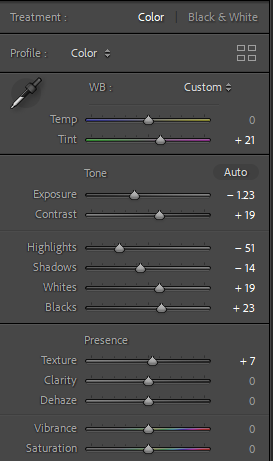
I edited all of these images using Lightroom, with the hopes of improving them and completing the ideas I had in mind. I tried to experiment with different things, for example, black and white tones. The black and white inspiration came from Claude Cahun as I believe most of Cahun’s work is in black and white which she used to reflect on herself as a person. I think the black and white tone goes really well with the specific photos I chose because it sets the mood of the photograph. Personally, I think all of these edited photographs represent Femininity and Masculinity in many different but clear ways.
